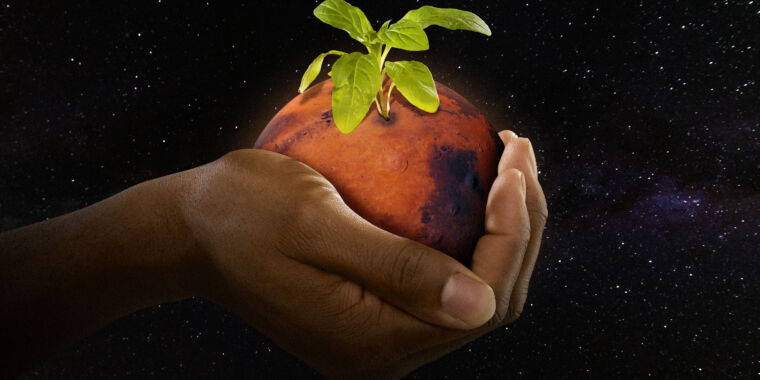- cross-posted to:
- science@lemmy.world
- cross-posted to:
- science@lemmy.world
Article by Jacek Krywko, 13 September 2023. No intro here, but a much older article says “a science and technology writer based in Warsaw, Poland. He covers space exploration and artificial intelligence research, and he has previously written for Ars about facial-recognition screening, teaching AI-assistants new languages, and AI in space.”.
WOW! I have no knowledge of the field, but it looks informative. As articles go, it’s fairly long.
It’s about efforts to get “bioregenerative life-support systems”, living life-support systems as needed for long space journeys and bases over yonder.
The first efforts its lists were plant-based, BIOS (Soviet) and CELSS (US).
BIOS-3 experiments showed how much labor it took to operate this system. Results were bleak. Astronauts basically worked like full-time farmers just to keep it going… There was very little control over what exactly the biological component was doing.
Then MELiSSA was proposed and implemented. It is bacteria-based. The great advantage is that each bacteria species does about one thing, and responds immediately to conditions, so humans can have much much more control. But it was a huge project:
The project quickly grew into a gargantuan effort backed by 14 countries and over 50 institutes, universities, and companies.
Then
In 2017, NASA founded the Center for Utilization of Biological Engineering in Space (CUBES), a conglomerate of federal agencies, industry, and academia, with the goal of building a demonstration biosystem for a future Mars colony…
While MELiSSA was focused on fine-tuning the hardware and software and left biology intact, CUBES involves engineering all three to make them work seamlessly together.
So bacteria-based, but now with genetic engineering. Also looking at producing more, like plastics or papers or more.
It talks about one drawback of that approach: “The problem is that life, when pushed, sometimes fights back.” The changes for more productions of nitrites or fatty acids or whatever are not adaptive for the organism, so it has an incentive to mutate back towards its original if that can breed faster.
There’s also discussion of multiple stages with more and more capability.
And also discussion of funding. MELiSSA has continuing funding and is looking for a human prototype. CUBES has had some design work, “with, like, $15 million USD in five years”.
Anyway, well worth considering, and the comments are more valuable than in many comment sections. I did see fuzzyfuzzyfungus noting his own lay experience in existing bioreactors (amplifying a point above), specifically “the occasions when very, very unhappy science types announce that we’ll be shutting down production because some undesired strain that’s a lot less useful but a lot better at survival than the desired strain had snuck in and it was time to bleach out the tanks and sterilize everything to hell and back were just a thing that happened on occasion”.
Edit: other items mentioned in the comments:
A City on Mars: Can we settle space, should we settle space, and have we really thought this through?: upcoming book from the Weinersmiths.
Curiosity Finds Fairly Benign Radiation Environment on Mars
Covid on Mars: SF essay by Charlie Stross


